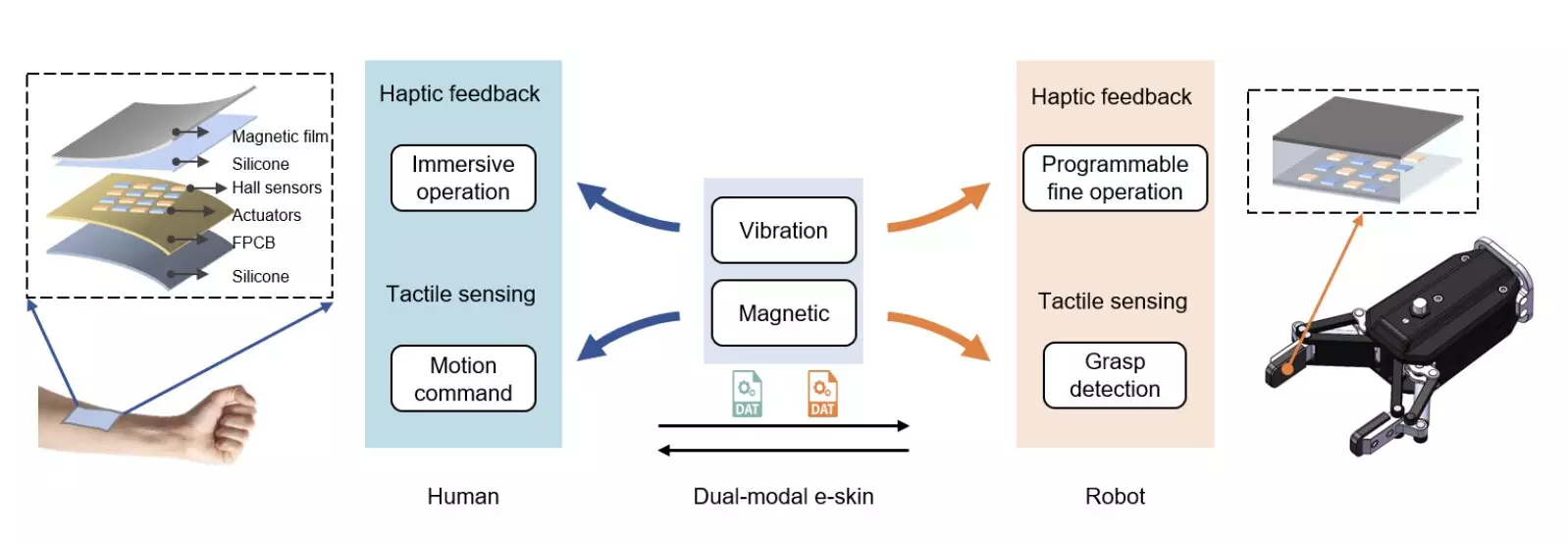In recent years, advancements in materials science and engineering have paved the way for the development of sophisticated materials tailored for robotic and prosthetic applications. One such innovation is the electronic skin, or e-skin, which is designed to mimic the sense of touch by sensing the surrounding environment. Recently, researchers at Tsinghua University have introduced a new dual-modal tactile e-skin that promises to enhance the sensing capabilities of robots and enable bidirectional touch-based human-robot interactions.
The dual-modal tactile e-skin developed by Dr. Wenbo Ding and his team integrates multimodal magnetic tactile sensing with vibration feedback. This technological breakthrough allows the e-skin to detect tactile information and provide tactile feedback, thus creating a seamless communication channel between humans and robots. Unlike previous electronic skin technologies that could only sense touch or provide feedback, this new e-skin combines both functions in a compact and cost-effective manner.
The e-skin comprises a flexible magnetic film, silicon elastomer, Hall sensor array, actuator array, and microcontroller unit. The Hall sensor detects the deformation of the magnetic film caused by mechanical pressure, leading to changes in the magnetic field for tactile perception. Simultaneously, the actuator array generates mechanical vibrations to produce tactile feedback, enhancing the interactive experience between humans and robots. This integrated approach allows for bidirectional touch-based human-robot interactions.
Dr. Ding and his colleagues conducted experiments to test the prototype e-skin, exploring its potential applications in three main areas: object recognition, precise weighing, and immersive human-robot interactions. They found that the e-skin was effective at both sensing tactile information and providing tactile feedback. In particular, the innovative weighing experiment showcased the e-skin’s ability to control the speed and accuracy of delicate weighing processes, meeting daily cooking and industrial weighing requirements at a low cost.
The dual-modal tactile e-skin introduced by Dr. Ding and his team holds promise for a wide range of applications, including robotic manipulation, industrial control, and prosthetic limb development. The e-skin could revolutionize human-robot interactions by enabling more nuanced and precise tactile communication. Dr. Ding’s future research will focus on miniaturizing e-skin components for broader applications, incorporating new sensing modalities like temperature sensing, and adding auditory feedback capabilities to enhance the overall user experience.
Overall, the development of dual-modal tactile e-skin technology represents a significant milestone in the field of human-robot interactions. By bridging the gap between tactile sensing and feedback, this innovative e-skin has the potential to transform the way humans and robots interact, opening up new possibilities for collaboration and communication in various domains.



Leave a Reply